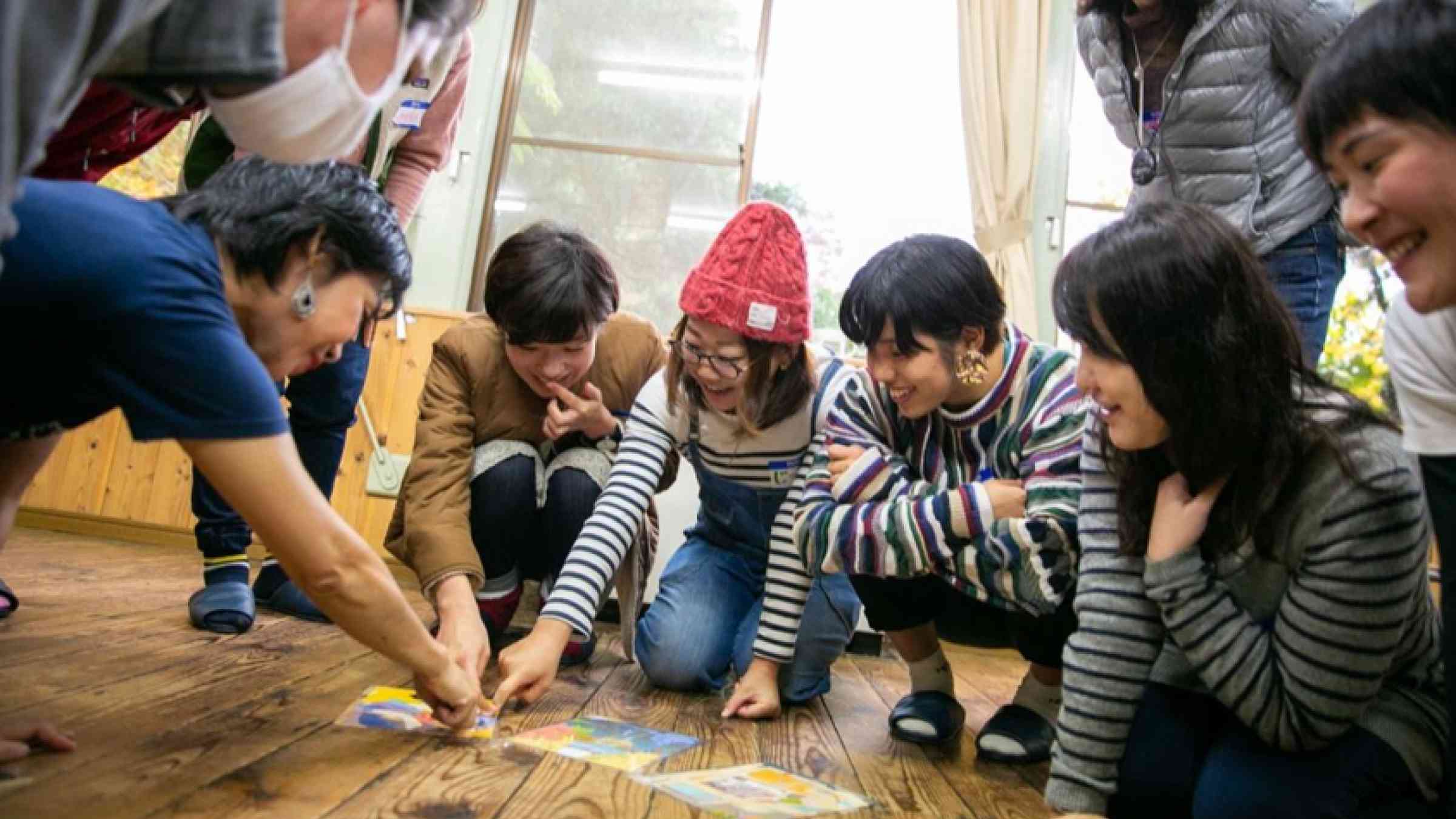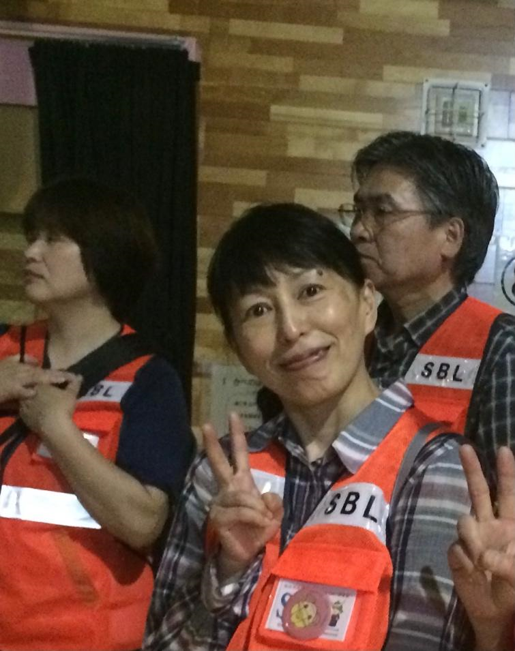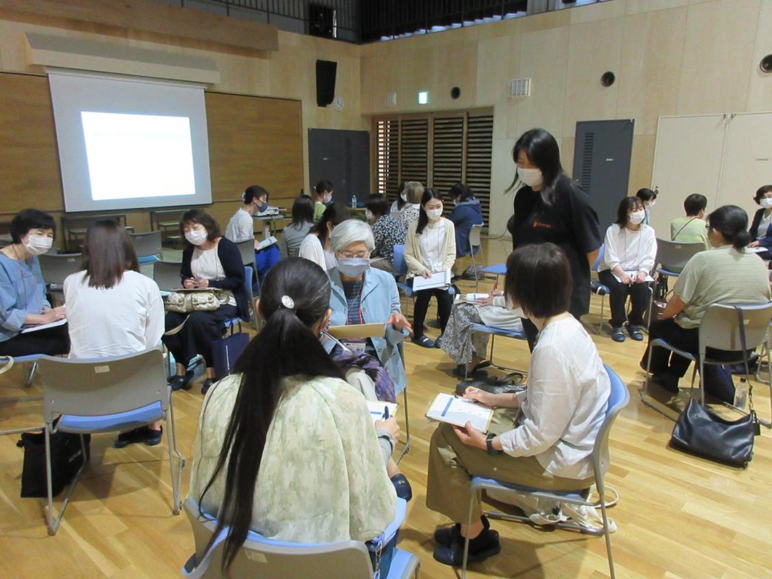How women leaders emerged from the Great East Japan Earthquake and Tsunami

Ms. Hiroko Sawada felt a strong sense of regret when the Great East Japan Earthquake and Tsunami struck off the northeast coast of Japan, near the Tohoku Region on March 11, 2011. The 9.0-magnitude earthquake was followed by tsunamis that engulfed large areas of the Tohoku coast including the Fukushima Dai-ichi nuclear plant. Approximately 20,000 people lost their lives and over 2,500 are still officially reported as missing, while a further 6,000 suffered injuries. In total, over 470,000 people were evacuated from their homes.
“It was a disaster like no other I had ever experienced, and in its immediate aftermath, I could only think of the many people who were suffering and grieving. I repeatedly wondered whether there was anything I could do, and I regretted not having the courage to take action and stay put,” recounted Ms. Sawada, a resident of Sendai city, the political and economic center of the Tohoku Region.
She visited one of the evacuation shelters set within Sendai City to see if there was anything she could do. However, the leader of the shelter was a man, and she was turned away at the gate.
“The staff who operated the shelter were all men, the heavyweights in the community. So helping the women might have meant serving food. In addition to the fact that I could not advise the men on a concrete plan, I felt helpless because I was not a board member of the community association, and I had no disaster or shelter-related knowledge or skills,” said Ms. Sawada.
This experience made her realize how helpless she was. “Then, in 2013, I saw an article about a training course for women disaster-prevention leaders and applied to learn more about disaster risk reduction. I applied because I thought it would be good for the community if women became disaster prevention leaders,” recalled Ms. Sawada 10 years on in an interview.
After completing the course, Ms. Sawada obtained the Sendai City Community Disaster Prevention Leader (Sendai Bosai Leader or SBL) qualification, awarded by the city of Sendai, and acquired the ability to contribute to disaster prevention in the community. However, most SBLs were male, and it was unclear whether the voices of the female SBLs who wanted to play active roles in the community reached the community association leaders. “I started volunteer work as a disaster prevention leader. However, I was losing my confidence as an SBL,” said Ms. Sawada.

That’s when she discovered the Sendai Gender Equal Opportunity Foundation’s ‘Decision-making and Taking Action’—Promotion of Women Leadership Program.
“The course taught me the importance of teamwork. I am convinced that by connecting with many women who are community disaster-prevention volunteers in other municipalities, we can achieve things that we cannot do alone. For example, when we had to encourage junior and senior high school students to participate in an evacuation drill, we were able to do so through teamwork by women who were key players in the school, PTA (Parent-Teacher Association), and local government,” said Ms. Sawada.
The disaster spurred a movement to develop female community leaders in Japan following the observation of poor gender equality considerations in various situations.
For example, after the disaster, there were shortages of products used by women in evacuation centers; no privacy was available to women for breastfeeding and changing clothes; women were forced to prepare meals in evacuation centers because of traditional gender roles and only men managed the leadership of temporary housing. “We went to the affected areas to support women, but because the many leaders of the evacuation centers were men, it was difficult for women to speak up. We recognized the need for women’s empowerment in the community to fundamentally improve this situation,” said Ms. Hiromi Narita, project manager at the Sendai Gender Equal Opportunity Foundation.
The identification of these problems led to many women-led initiatives at the community level in the recovery and reconstruction of Tohoku. The earthquake’s impacts paved the way for women to play an active role in local disaster management, a field in which their participation had been remarkably low. Compared to the Great Hanshin-Awaji Earthquake in 1995 and Niigata-Chuetsu Earthquake in 2004, gender equality at shelters was addressed immediately after the occurrence of 2011 disaster, indicating that the understanding of gender equality in disasters has become more widespread among people.
Although there are no statistical data, there are reports that the evacuation centers set up after the Great East Japan Earthquake in 2011 and the Kumamoto Earthquakes in 2016 provided women with safe spaces and with specific locations for breastfeeding.
The city of Sendai is continuing to increase women’s involvement in disaster risk reduction (DRR). In 2016, the Sendai Gender Equal Opportunity Foundation launched a leadership training course to promote women’s participation in disaster prevention and recovery planning. “Since then, the Foundation has successfully reached its target of 100 women participating in the course in five years,” said Ms. Rino Sato, the project leader of the training course.

According to Prof. Fumihiko Imamura, Tohoku University, an expert in science and technology for tsunami mitigation, teaching the lessons learned from disasters to future generations is vital in improving DRR. He advocates the importance of storytelling to pass on the lessons of disasters, for example, women storytellers passing on their memories of the Great East Japan Earthquake. “The participation of women in DRR will lead to disaster mitigation by encouraging Sendai residents to participate in DRR through attending lectures,” said Mr. Imamura, a professor at Tsunami Engineering Laboratory Disaster Control Research Center, Tohoku University.
Ms. Megumi Ishimoto, one of the women who established Women’s Eye, a non-profit organization (NPO) in the coastal town of Minamisanriku in Miyagi Prefecture in the Tohoku Region after volunteering in the aftermath of the 2011 disaster, stated that she could not see herself reducing her support for women in the areas affected by the disaster. Even in the context of the COVID-19 preventive measures, (such as social distancing), the organization explores alternatives for disaster risk reduction activities to continue.
“Looking back, I can see that 2011 was a very difficult year. In retrospect, after the 2011 earthquake and tsunami in Japan, we were simply absorbed in trying to improve the lives of those affected. My original intention was to provide support to the affected areas, not to start something specific to women, but after seeing the harsh conditions of women in shelters, I was convinced that improving the conditions of shelters with women in mind would improve the lives of all survivors,” said Ms. Ishimoto.

Dr. Rajib Shaw, an international disaster management policy researcher says that though Japan is traditionally a paternalistic society, there is a sense of the importance of gender balance in all professions and work, including DRR.
“At the 2015 World Conference on Disaster Risk Reduction held in Sendai, then Prime Minister Shinzo Abe expressed Japan’s strong commitment to gender studies in DRR. Subsequently, on the topics of gender and DRR, the Japan International Cooperation Agency conducted global training and capacity-building programs and funded several innovative overseas projects.”
“In Japan, local governments are actively engaged in gender-based approaches to risk reduction. The city of Kochi on the island of Shikoku is a typical example, where a women’s disaster reduction group has been formed at the ward level and regular exchanges and discussions occur. Through women’s networks, concerns such as everyday preparedness are emphasized in Kochi. This approach has been observed in other cities,” said Dr. Shaw.
The Sendai Framework for Disaster Risk Reduction 2015–2030, a leading policy instrument on disaster risk reduction, recognizes the importance of integrating a gender perspective into all DRR policies and practices, and the need to empower women to publicly lead and promote gender-equitable and universally accessible response, recovery, rehabilitation, and reconstruction.
However, a recent paper that analyses the relevance of the Sendai Framework for women in the context of disasters, argues that, although the framework has made headway in promoting the inclusion of women and girls in disaster policy and programming, a bolder and broader approach to gender inclusiveness is needed in the current stage of implementation and monitoring. This includes by adopting a broader consideration of disaster impacts, such as gender-based violence, to better reflect the reality of disaster losses experienced by women and sexual and gender minority groups.
In Japan, where women account for 51 per cent of the country’s population, the government’s Fifth Basic Plan for Gender Equality aims to raise the proportion of women in leadership positions to 30 per cent by the early 2020s. As a target, it sets the achievement of 30 per cent in female membership in prefectural disaster management councils and municipal disaster management councils by 2025.
“DRR is not something that can be dealt with in one field of expertise but requires a broad perspective. On the contrary, any field can contribute, and everyone has a chance to play an active role. It is important that we share the challenges with the world and act with the awareness that we can solve them together,” concludes Prof. Fumihiko Imamura, the tsunami mitigation expert.